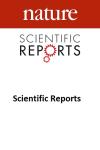Abnormal basic visual processing functions in binocular fusion disorders

Heterophoria is a common type of binocular fusion disorder that consists of a latent eye misalignment with potential consequences on daily activities such as reading or working on a computer (with CVS). Crowding, a type of contextual modulation, can also impair reading. Our recent studies found an abnormal pattern of low-level visual processing with larger perceptive fields (PF) in heterophoria. The PF is the fundamental processing unit of human vision and both masking and crowding depend on its size. We investigated how heterophoria would impact the PF’s size via a lateral masking experiment and consequently affect the foveal crowding at different letter-spacings (the crowding zone). More specifically, we explored the relationship between crowding, lateral masking, the PF’s size, and the amount of heterophoria. The binocular horizontal PF’s size was larger with heterophoric subjects, in agreement with our previous study. We found a stronger crowding and an extended crowding zone associated with slower response times; this shows that the processing of letter identification under both crowded and uncrowded conditions requires more processing effort in heterophoric individuals. In agreement with previous studies, we found a correlation between the crowding zone and the PF’s size; each was strongly correlated with the amount of phoria. These findings resemble those involving the PF size and the extended crowding found at the fovea in amblyopia and young children. We suggest that these findings could help explain the inter-observers’ variability found in the masking literature, and the reading difficulties often encountered in subjects with high heterophoria.
תאריך עדכון אחרון : 19/02/2024



